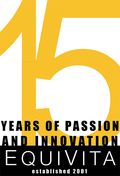I, of course, thought about fitness and how if the focus is just on achieving a goal there can be lifestyle altering intensity, but it is not sustainable.
For instance, if you are only focused on losing 50 pounds, what happens to your fitness plan once you have achieved that goal? Statistically we know that you will start gaining weight.
For me, I have always held the belief that if you have a body then you should take care of it. And while the specifics of what is included in taking care of your body will vary, the primary intention of caring for one’s self stays the same.
But this is not the same as finding enjoyment in the activities of taking care of yourself. True, there are certainly some who really enjoy the feeling of exercising, but there are many who don’t. For this group exercise is pain, discomfort, hot, sweaty and, frankly, something to be avoided. So, how to address this issue where even people who hate the feelings of exercise, need to be exercising?
Without doubt this is a challenge. This is not just an individual challenge but also one that challenges the healthcare of our entire nation. If we humans don’t find enjoyment in the doing, then we probably aren’t going to do it, whatever it is, unless we are forced.
And this leads directly back to why people spend so much time, effort and money on activities that are simply for their enjoyment. If we believe Professor Setiya this is how people find happiness and true enjoyment in their lives, and they do this not because they are forced but because they want to. But I don’t think that this is the same as saying that people must enjoy everything about the activity. For instance, a gardener who might hate weeding can accept that it is a necessary role for the bigger picture of what they do enjoy.
Similarly, while it may be hard to find enjoyment when you are in the midst of your cardio exercise, you could adapt your focus to the bigger picture and how great it feels to know that you are taking good care of yourself. And taking good care of yourself, physically, is the basis of the 5 Keys Fitness Process. You may not enjoy each Key equally, but each deserves its attention in your program and by using the system you can feel how great it feels to take good care of you.
As always, let me know how I can help.
Adam

 RSS Feed
RSS Feed
